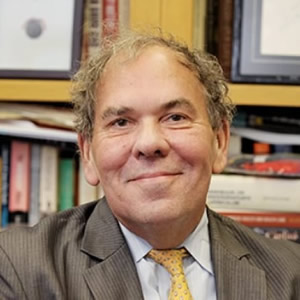A ‘Great Upheaval’ is coming to higher education: Q&A with Arthur Levine
August 30, 2022
There are very real challenges, but the future is in their hands. If they seize the moment, they can do incredible things.

Arthur Levine is a Distinguished Scholar of Higher Education at New York University, President Emeritus of Teachers College, Columbia University and President Emeritus of the Woodrow Wilson National Fellowship Foundation. He’s the author of many books, including The Great Upheaval: Higher Education’s Past, Present, and Uncertain Future.
Thank you for agreeing to be the keynote speaker at this year’s Trusteeship Conference. For those who haven’t read your book, The Great Upheaval, can you give us an idea of what it’s about?
The Great Upheaval looks at the future of higher education. It does that in three ways. First, it looks back historically. We’ve gone through a dramatic, profound transformation once before in our nation during the industrial revolution. Higher education was transformed then too. We looked back to see what happened and why.
The second thing we did was look at trends and projected them forward. We looked at demographics, economics and technology and where they would take us in the future.
The third thing we did was look at knowledge industries—newspapers, movies, music. They responded to the same challenges, but they had to do it earlier. So, what happened in those industries? Based upon the findings of those studies, we projected what would happen to higher education.
Can you explain why you landed on this approach to look “backward, forward and sideways” to predict how postsecondary education may change in the digital, knowledge age?
Throughout my career I made comparisons to what is happening in higher education today and in the past and projected trends forward. And what is happening to demographics and what that is going to mean. I also always made comparisons to other industries. This is the first time I put “backward, forward and sideways” together. I had no idea if they would come to a consistent conclusion, and they did.
As you note in your book, COVID-19 accelerated the pace of change in higher education. As we begin to recover from the global pandemic, why is it a mistake to simply return to business as usual?
I interviewed a whole bunch of college presidents last spring and into the summer, and we asked them what they were going to do in response to COVID. A lot of them just viewed it as an interruption, and when it ends, we can go back to fall 2019. The problem with that is COVID didn’t represent an interruption; it accelerated a whole bunch of changes that would have happened anyway. Alternative providers and nontraditional colleges entered higher education. Some institutions got closer to closing. Colleges and universities all went online. We also got a new kind of student who wanted upskilling and re-skilling. They weren’t interested in degrees. They wanted education by Thursday, not four years from now. That accelerated because of job changes that occurred during the COVID period.
Employers are often critical of higher education for not being responsive to business and industry needs. What advice can you give to institutions to improve their relationships with employers?
When higher education is most successful it has one foot in the library and one foot in the street. When the world changes quickly, higher education loses traction with the street. It can’t keep up. As a consequence, it really needs to build partnerships with companies and employers—that’s critical because they move faster than higher education. Also, they know the kinds of employees they need and the kinds of training those employees need.
I went to visit a community college recently, and that college had just gotten new technology from an employer down the block. They were really excited, but they didn’t realize that the reason they had given them the technology was that it was out of date. What it meant was today they were preparing students on equipment that was two generations out of date; tomorrow they up their ante so they are only one generation out of date. They really needed a partnership with that employer so they could work with technology that was up to date.
CPE’s Trusteeship Conference is geared toward higher education boards, presidents and state policymakers. What would you recommend they do to position their institutions for success in the digital age?
Every college in America is going to be hit by four changes. One is new providers that are entering the scene. A good example is Coursera. Coursera is a platform that offers massive online, open courses. Its enrollment before the pandemic was 53 million. Its enrollment during the pandemic rose to 78 million. That 25 million increase is more than the total enrollment in higher education. They offer courses from the top universities, companies and social institutions in America and around the world. This is pretty precious, high-quality stuff. It is cheaper and faster than higher education. Google offers an IT certificate that takes about five months, five hours a week. It is $49 a month. What college can match that? What’s more valuable than a Google certification if you are going into IT?
The second thing that is going to happen, and it is happening, is that students are going to increasingly demand the same thing from higher education they are getting from the music industry and the film industry—24/7 availability of content. They’ll want it to be unbundled so they can buy a single course or competency. They are going to ask for cheaper prices, and they are going to ask for individualization.
Third, we’re going to see a rise in people coming to higher education not for a degree but for a certificate or short-term learning. That’s driven by automation because they are going to need to retrain. It is driven by the fact that we live in a knowledge economy, and the half-life of knowledge is getting shorter.
Lastly, higher education now focuses on fixed time, fixed processes and teaching. We are going to switch to a focus on outcomes. The implications are profound. Everything we do that has to do with time is going to wane in importance—credits, semesters. Students will move at their own rate. It won’t matter where they got that learning; all we care about is if they can demonstrate the competencies.
The end result is going to be that colleges are going to be forced into a few buckets, and you can see all these things in Kentucky. There are small, low-endowment, rural, low-selectivity private schools. Federal relief helped them continue through the pandemic, but we are going to see 10-20% of all colleges in America close. Some colleges are going to be able to adapt to the changes I described. The ones that are most likely to be able to do that are research universities. We need to preserve them because we still need research.
Next, 18% of all college students are 18-24, full-time and residential. Some people still want that experience, so we will preserve some residential colleges. The final group is going to be disrupted. Those institutions are regional universities and community colleges. They have a lot of part-time students, older students and working students, and those are the kinds of students who are migrating to Coursera and other providers.
My advice is to look forward, not backward. You can’t assume it isn’t going to happen to your institution. You can’t assume it is a marketing problem—it is a demographic, economic and technological problem. What they really need to do is re-establish the connection to the street.
They also need to understand that every institution needs to be differentiated from the rest. They need to have a very clear sense of vision. A trustee from a small college came to see me, and he said, “we’re doing everything, instituting all these reforms, and our enrollment continues to go down.” It is common for institutions to throw a million different solutions at the wall and see if anything sticks. The problem is they are all throwing the same solutions.
Of course, their enrollments were going down; there was nothing special about this school. Its faculty and programs weren’t better than competing institutions, it wasn’t cheaper, its campus didn’t offer anything other institutions didn’t offer. What they tried to differentiate themselves with was their 200-year history. I can’t quite imagine that is a real turn on for today’s students. They could have changed their focus; for example, they could become the college that has the best teaching in the entire state in a certain area. But they can’t be generic.
Still, I want people to know this is not a dire report. There are very real challenges, but the future is in their hands. If they seize the moment, they can do incredible things.
Last Updated: 8/30/2022
